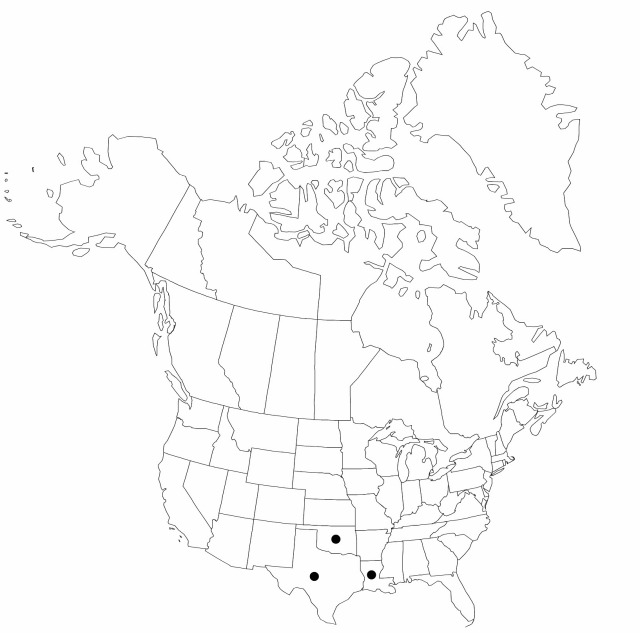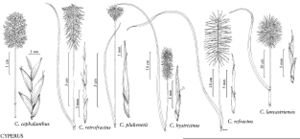Difference between revisions of "Cyperus cephalanthus"
Ann. Lyceum Nat. Hist. New York. 3: 431. 1836.
FNA>Volume Importer |
imported>Volume Importer |
||
| (3 intermediate revisions by 2 users not shown) | |||
| Line 6: | Line 6: | ||
|place=3: 431. 1836 | |place=3: 431. 1836 | ||
|year=1836 | |year=1836 | ||
| + | }} | ||
| + | |special_status={{Treatment/ID/Special_status | ||
| + | |code=F | ||
| + | |label=Illustrated | ||
}} | }} | ||
|basionyms= | |basionyms= | ||
| Line 11: | Line 15: | ||
|name=Cyperus laetus var. cephalanthus | |name=Cyperus laetus var. cephalanthus | ||
|authority=(Torrey & Hooker) Kükenthal | |authority=(Torrey & Hooker) Kükenthal | ||
| + | |rank=variety | ||
}} | }} | ||
|hierarchy=Cyperaceae;Cyperus;Cyperus subg. Cyperus;Cyperus cephalanthus | |hierarchy=Cyperaceae;Cyperus;Cyperus subg. Cyperus;Cyperus cephalanthus | ||
| Line 36: | Line 41: | ||
-->{{#Taxon: | -->{{#Taxon: | ||
name=Cyperus cephalanthus | name=Cyperus cephalanthus | ||
| − | |||
|authority=Torrey & Hooker | |authority=Torrey & Hooker | ||
|rank=species | |rank=species | ||
| Line 50: | Line 54: | ||
|publication title=Ann. Lyceum Nat. Hist. New York. | |publication title=Ann. Lyceum Nat. Hist. New York. | ||
|publication year=1836 | |publication year=1836 | ||
| − | |special status= | + | |special status=Illustrated |
| − | |source xml=https:// | + | |source xml=https://bitbucket.org/aafc-mbb/fna-data-curation/src/2e0870ddd59836b60bcf96646a41e87ea5a5943a/coarse_grained_fna_xml/V23/V23_306.xml |
|genus=Cyperus | |genus=Cyperus | ||
|subgenus=Cyperus subg. Cyperus | |subgenus=Cyperus subg. Cyperus | ||
Latest revision as of 20:39, 5 November 2020
Herbs, perennial, rhizomatous. Culms trigonous, 40–70(–100) cm × 2–3 mm, scabrid or hirtellate, either immediately proximal to apex or over distal 1/2 of culm. Leaves flat, 30–80 cm × 4–10 mm, scabrid on margins, ribs on abaxial surface. Inflorescences: spikes ovoid, 12–20 × 13–18 mm; rays 3–6, 4–10(–16) cm, glabrous; bracts 3–5, ± horizontal to reflexed, 3–12(–36) cm × 0.4–3(–5) mm, scabrid like leaves; rachilla deciduous, essentially wingless or wings inconspicuous, hyaline, 0.1(–0.2) mm wide. Spikelets 25–50(–80), oblong, quadrangular-compressed, 5–10 × 2.5–3.5 mm; floral scales deciduous, 4–10(–14), marginally clear, laterally brownish to clear distally, or light brown or reddish brown, blunt, laterally 3(–4)-ribbed, ovate-lanceolate, 2.5–3 × (1.2–)1.4–2 mm, often erose apically, apex acute to obtuse, entire or emarginate. Flowers: anthers 0.4–0.6 mm; styles 0.8–1.2 mm; stigmas 2 mm. Achenes brown to reddish brown, ± stipitate, ellipsoid, 1.2 × 0.5–0.6 mm, apex obtuse, scarcely to distinctly apiculate, surfaces puncticulate.
Phenology: Fruiting summer.
Habitat: Wet prairies
Elevation: 0–50 m
Distribution

La., Okla., Tex., South America (Argentina, Brazil, Paraguay, Uruguay).
Discussion
The combination of spreading floral scales and scabrid culms separates this rather uncommon species from any others occurring in its range. The scarcity of Cyperus cephalanthus in the United States and its disjunct distribution suggest it might be naturalized rather than native. It was collected early in the nineteenth century in Louisiana, and the amphitropical distribution is not without parallel in the genus (cf. 12. C. eragrostis).
Cyperus cephalanthus has been treated as a variety of the widespread, polymorphic South American C. laetus (G. Kükenthal 1935–1936). Recognition of C. cephalanthus as a species follows recent American floristic practice.
Selected References
None.
